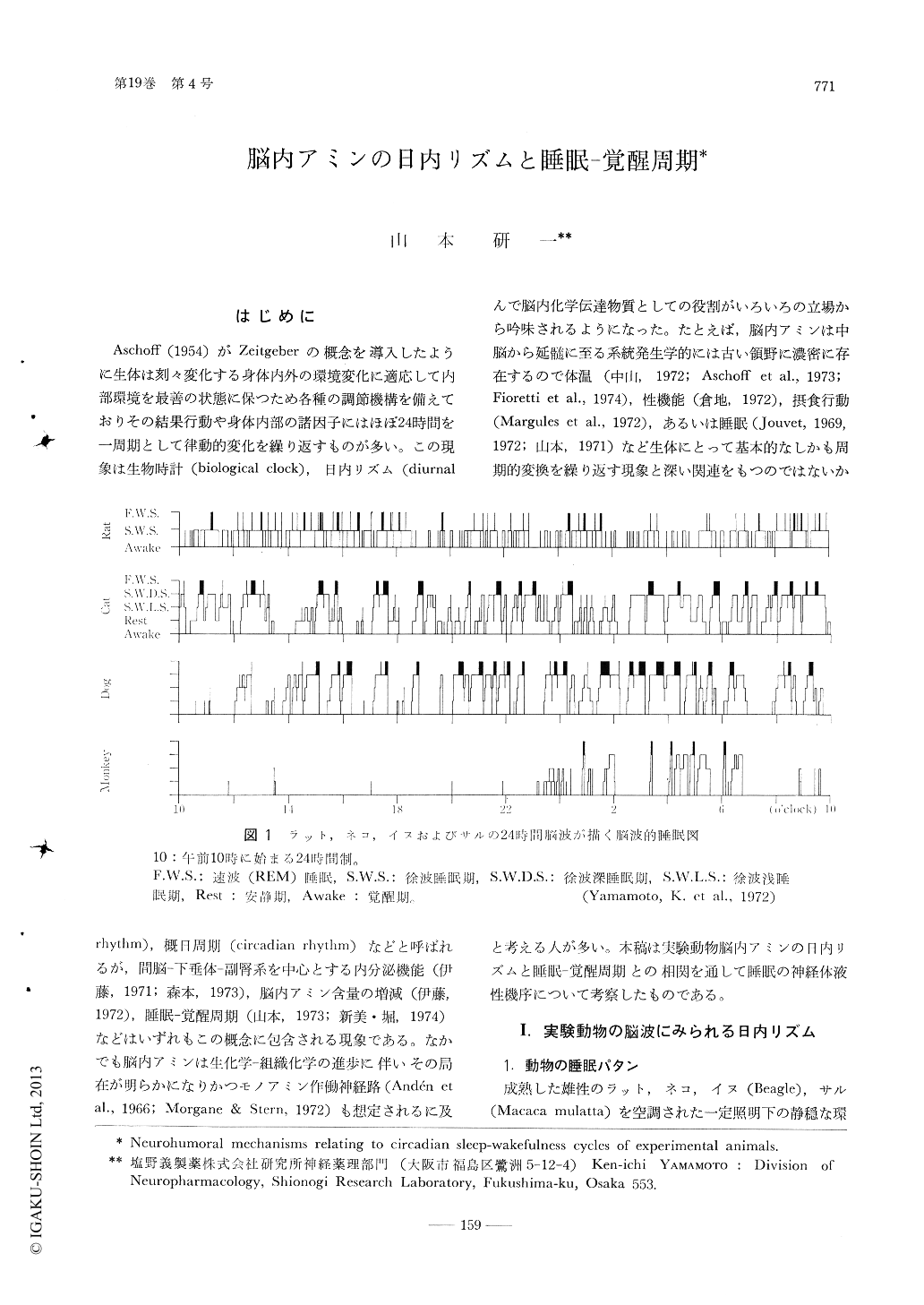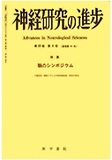Japanese
English
- 有料閲覧
- Abstract 文献概要
- 1ページ目 Look Inside
はじめに
Aschoff(1954)がZeitgeberの概念を導入したように生体は刻々変化する身体内外の環境変化に適応して内部環境を最善の状態に保つため各種の調節機構を備えておりその結果行動や身体内部の諸因子にはほぼ24時間を一周期として律動的変化を繰り返すものが多い。この現象は生物時計(biological clock),日内リズム(diurnal rhythm),概日周期(circadian rhythm)などと呼ばれるが,間脳—下垂体—副腎系を中心とする内分泌機能(伊藤,1971;森本,1973),脳内アミン含量の増減(伊藤,1972),睡眠—覚醒周期(山本,1973;新美・堀,1974)などはいずれもこの概念に包含される現象である。なかでも脳内アミンは生化学—組織化学の進歩に伴いその局在が明らかになりかつモノアミン作働神経路(Anden et al.,1966;Morgane & Stern,1972)も想定されるに及んで脳内化学伝達物質としての役割がいろいろの立場から吟味されるようになった。
Electroencephalographic, biochemical and behavioral studies have been carried out in several species of animal with chronically indwelling brain electrodes for neuropharmacological analysis of circadian sleep-wakefulness cycles, and the results were reviewed.
1. Differences in the normal EEG pattern and sleep-wakefulness cycles among six species of animal: From the correspondence between EEG and behavior, normal EEG levels were classified into three levels in rats, five levels in rabbits, six levels in cats and dogs, and seven levels in monkeys.

Copyright © 1975, Igaku-Shoin Ltd. All rights reserved.


